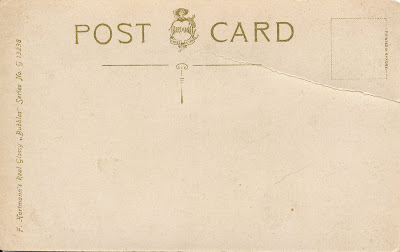This card is a wholesale order for boots and shoes, sent to John Leutz, Allentown, PA in 1895. The order was filled; you can see the word "booked" written in pencil over the order...also a blue check mark. It's not easy to decipher though. This is what I can make out of the message:
Please ship us
1 Case Ladies gums low cut
(various sizes listed)
12 pr boys gum shoes 1 to 5
6 pr misses gums #2
1pr boys gums #5 low cut fancy
If not all ready received ship us 6 pr boys gum boots leather sole #5
1 pr #8 shoes for felt boots.
yours truly
J S Wentz Co
Hazelbrook, PA 3/11/95
But J.S Wentz Co. was not a shoe seller, it was a coal mining operation! What were they doing ordering all these shoes and boots? I can only guess that since the company provided housing for its workers, it may have also operated a company store.
There was a history of labor disputes at J.S. Wentz. The Auburn Bulletin of June 23, 1887 reported a judgment for $300 in favor of six miners who had their "goods and chattels thrown into the streets" when they were evicted from the houses of J.S. Wentz Co. They were also awarded back pay. It was reported that J.S. Wentz Co. planned to appeal the case. The company's owner, John S. Wentz, was a millionaire and lived in Philadelphia at 38th and Locust streets.
In 1903, Edward Wentz, the son of John S. Wentz, disappeared in Virginia on his way to meet with land agents. A $30,000 reward was offered for his return alive or for the capture of his murderers. I think they were pretty much resigned to the fact that he had been murdered. All of the mining operations of the Wentz estate and the Virginia Coal and Iron Co. were suspended and the 1,000 miners, who earned $2 a day, were ordered to join in the search. It was suspected that Edward had fallen victim to a mountain clan in retribution for his crusade against squatters and moonshiners. His family dismissed rumors that Edward may have left the country because of a love disappointment, saying that he had no particular interest in any woman (Source: NY Times, October 24, 1903.)
Edward Wentz had indeed been slain, however it was not true that he had no particular interest in a woman either. In his will he left $500,000 to his fiancee, Cornelia Brookmire of St. Louis, Missouri.






















